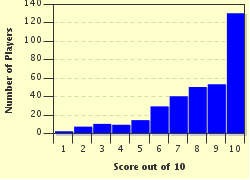Quiz Answer Key and Fun Facts
1. What tree, named after the world tree in Norse mythology, was the source of mana within 'Tales of Phantasia' and was guarded by the noble forest spirit Martel?
2. Mystic elf Runeglom awarded the party Gungnir after saving the prince of Alvanista from Dhaos's thrall. Sharing a similar function to Gungnir in Norse mythology, what type of item was Runeglom's Gungnir?
3. Which technologically advanced city, who used the powerful MysTek cannon against Dhaos's fearsome flying forces, was named after the human-inhabited world in Norse mythology?
4. Named after the father of the frost giants within Norse mythology, the cautious elves inhabited a deadly forest filled with petrifying lizard-men, away from human influence. Can you identify the forest from this list?
5. Named after the vigilant god within Norse mythology who guarded Bifrost, the rainbow bridge between the world of the humans and gods, in which secluded village did the wary elves reside?
6. Which creature, who ferried the afterlife to the great hall Valhalla in Norse mythology, lent Cless a flying horse to help defeat Dhaos's forces in return for his Gungnir?
7. The Burning Tower in Fireland held a statue of the father of the Norse gods and was the only remnant of a country which used to be one of three world superpowers. Can you remember the country and statue's name?
8. Named after a fearsome wolf within Norse mythology, what was the name of Freezekill's church and cavern which held the mighty Vorpal Sword?
9. Which largely intact sunken city named after an electrifying Norse god did the party travel deep underwater to, in order to use its time travel facility and return to their home time?
10. Based in part on the Norse creation myth, the Eternal Sword, used to combat Dhaos's time traveling powers, was forged from the Vorpal Sword, Flamberge and the Diamond Ring. Which two primary elements have been combined here?
Source: Author
malik24
This quiz was reviewed by FunTrivia editor
kyleisalive before going online.
Any errors found in FunTrivia content are routinely corrected through our feedback system.

